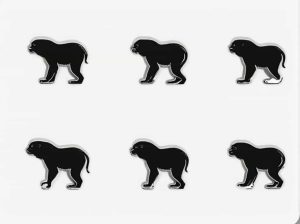Softwood forests also known as coniferous forests are home to a variety of animals that have adapted to the cool temperatures and dense tree cover. These forests dominated by pine spruce fir and cedar trees provide shelter and food for a range of mammals birds and insects.
Understanding the wildlife of softwood forests helps us appreciate their ecological importance and the need for conservation.
What is a Softwood Forest?
Softwood forests mainly consist of coniferous trees which are characterized by needle-like leaves and cones. These forests are commonly found in North America Europe and Asia especially in boreal and temperate regions.
Key Features of Softwood Forests:
✔ Evergreen trees that retain their needles year-round
✔ Cool and moderate climates often experiencing long winters
✔ Acidic soil which influences plant and animal life
✔ Dense canopies providing excellent shelter for wildlife
Many animals have adapted to these conditions developing features such as thick fur keen senses and efficient hunting techniques.
Mammals of Softwood Forests
Softwood forests provide an ideal habitat for large and small mammals offering food shelter and protection from predators.
1. Moose (Alces alces)
The moose is one of the largest mammals found in softwood forests. These massive herbivores:
- Feed on bark twigs and aquatic plants
- Have long legs to navigate deep snow
- Are solitary animals except during mating season
2. Gray Wolf (Canis lupus)
The gray wolf is a top predator in coniferous forests. These social animals:
- Hunt in packs to take down large prey like moose and deer
- Communicate using howls and body language
- Play an important role in controlling herbivore populations
3. Red Fox (Vulpes vulpes)
The red fox is an adaptable mammal that thrives in softwood forests. It:
- Hunts small mammals birds and insects
- Uses its bushy tail for warmth in winter
- Has excellent hearing and smell to detect prey under snow
4. Snowshoe Hare (Lepus americanus)
The snowshoe hare is a small herbivore well adapted to coniferous forests. It:
- Changes its fur color from brown in summer to white in winter
- Has large furry feet to move easily on snow
- Is an important food source for predators like lynxes and owls
5. American Black Bear (Ursus americanus)
The black bear is a common resident of softwood forests. This omnivore:
- Eats berries nuts insects fish and small mammals
- Hibernates in winter relying on stored body fat
- Uses tree trunks for scratching and marking territory
Birds of Softwood Forests
Many birds are year-round residents of coniferous forests while others migrate seasonally.
6. Great Horned Owl (Bubo virginianus)
The great horned owl is a nocturnal predator that thrives in dense forests. It:
- Hunts rodents rabbits and birds
- Has silent flight feathers for stealthy hunting
- Uses its deep hoots to communicate
7. Bald Eagle (Haliaeetus leucocephalus)
The bald eagle often associated with softwood forests near water is a powerful raptor that:
- Feeds mainly on fish and small mammals
- Builds large nests in tall pine trees
- Is a symbol of strength and freedom in the United States
8. Pine Grosbeak (Pinicola enucleator)
The pine grosbeak is a colorful songbird found in coniferous forests. It:
- Eats seeds berries and insects
- Has a thick beak suited for cracking tough seeds
- Can withstand cold temperatures thanks to its dense feathers
9. Woodpeckers (Picidae family)
Several species of woodpeckers are found in softwood forests including the pileated woodpecker and three-toed woodpecker. These birds:
- Drill holes in tree bark to find insects
- Help control pest populations
- Use tree cavities as nesting sites
Reptiles and Amphibians of Softwood Forests
While reptiles and amphibians are less common in cold regions some species have adapted to seasonal changes.
10. Common Garter Snake (Thamnophis sirtalis)
The garter snake is one of the few reptiles found in coniferous forests. It:
- Hibernates in burrows during winter
- Feeds on frogs insects and small rodents
- Is non-venomous and uses camouflage for protection
11. Boreal Chorus Frog (Pseudacris maculata)
The boreal chorus frog survives in coniferous forests by:
- Freezing its body in winter and reviving in spring
- Eating insects spiders and small invertebrates
- Using loud calls to attract mates in spring
Insects of Softwood Forests
Insects are essential to the forest ecosystem serving as pollinators decomposers and a food source for birds and mammals.
12. Mountain Pine Beetle (Dendroctonus ponderosae)
The mountain pine beetle is a small but destructive insect that:
- Infests and kills pine trees by burrowing into bark
- Plays a role in forest regeneration by creating openings for new growth
- Can cause large-scale tree loss in heavily infested areas
13. Monarch Butterfly (Danaus plexippus)
Although the monarch butterfly prefers warmer climates some populations migrate through coniferous forests. These butterflies:
- Rely on milkweed plants for reproduction
- Travel thousands of miles during migration
- Are recognized for their bright orange and black wings
Conservation of Softwood Forest Wildlife
Many animals in softwood forests face threats from deforestation climate change and habitat destruction. To protect these ecosystems conservation efforts focus on:
✔ Sustainable forestry practices to balance logging and wildlife conservation
✔ Protecting endangered species like the Canada lynx and spotted owl
✔ Reducing human impact through responsible tourism and hunting regulations
✔ Reforestation projects to restore lost habitats
By preserving softwood forests we ensure that these incredible animals continue to thrive for future generations.
Softwood forests are rich in biodiversity supporting mammals like moose and wolves birds like owls and eagles reptiles amphibians and countless insects. Each species plays a unique role in maintaining the balance of this ecosystem.
Protecting softwood forests is essential for both wildlife and humans as these ecosystems provide oxygen store carbon and support global biodiversity. By understanding and conserving these forests we help protect the many fascinating animals that call them home.



